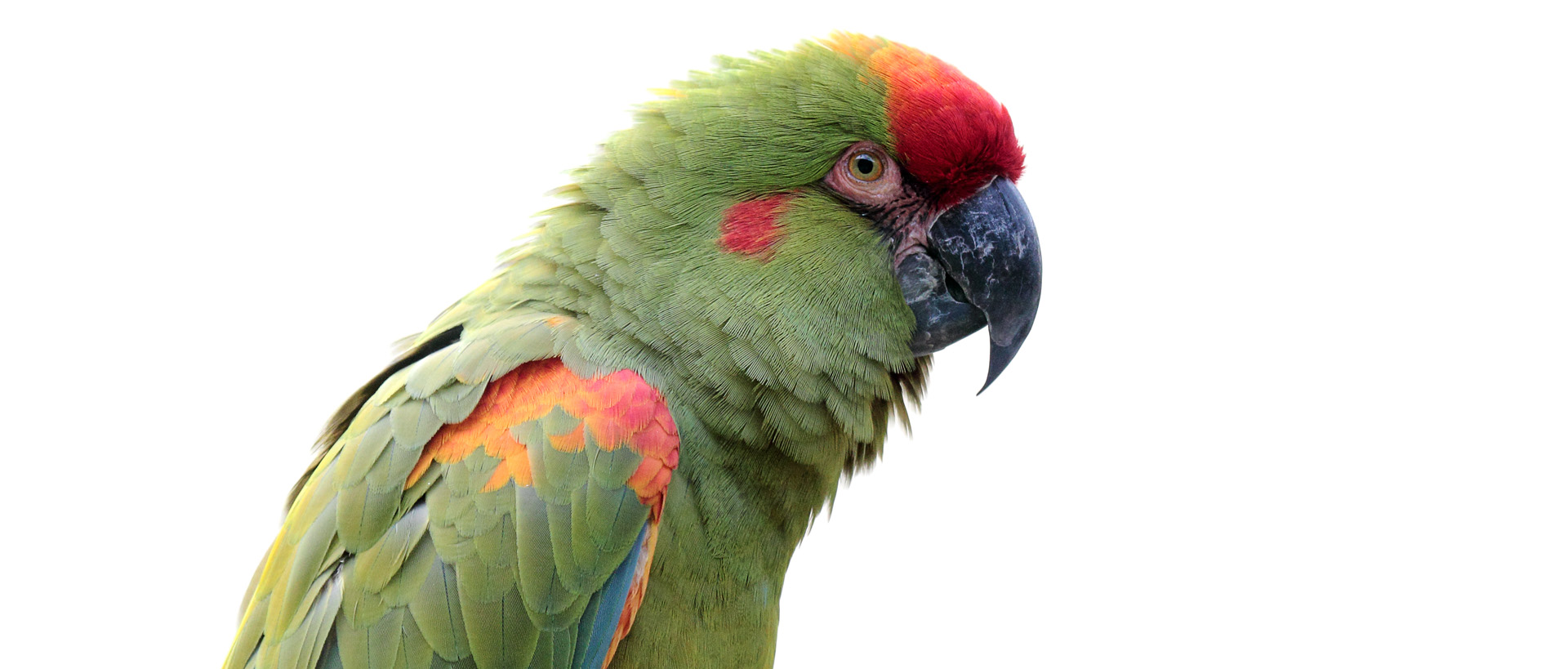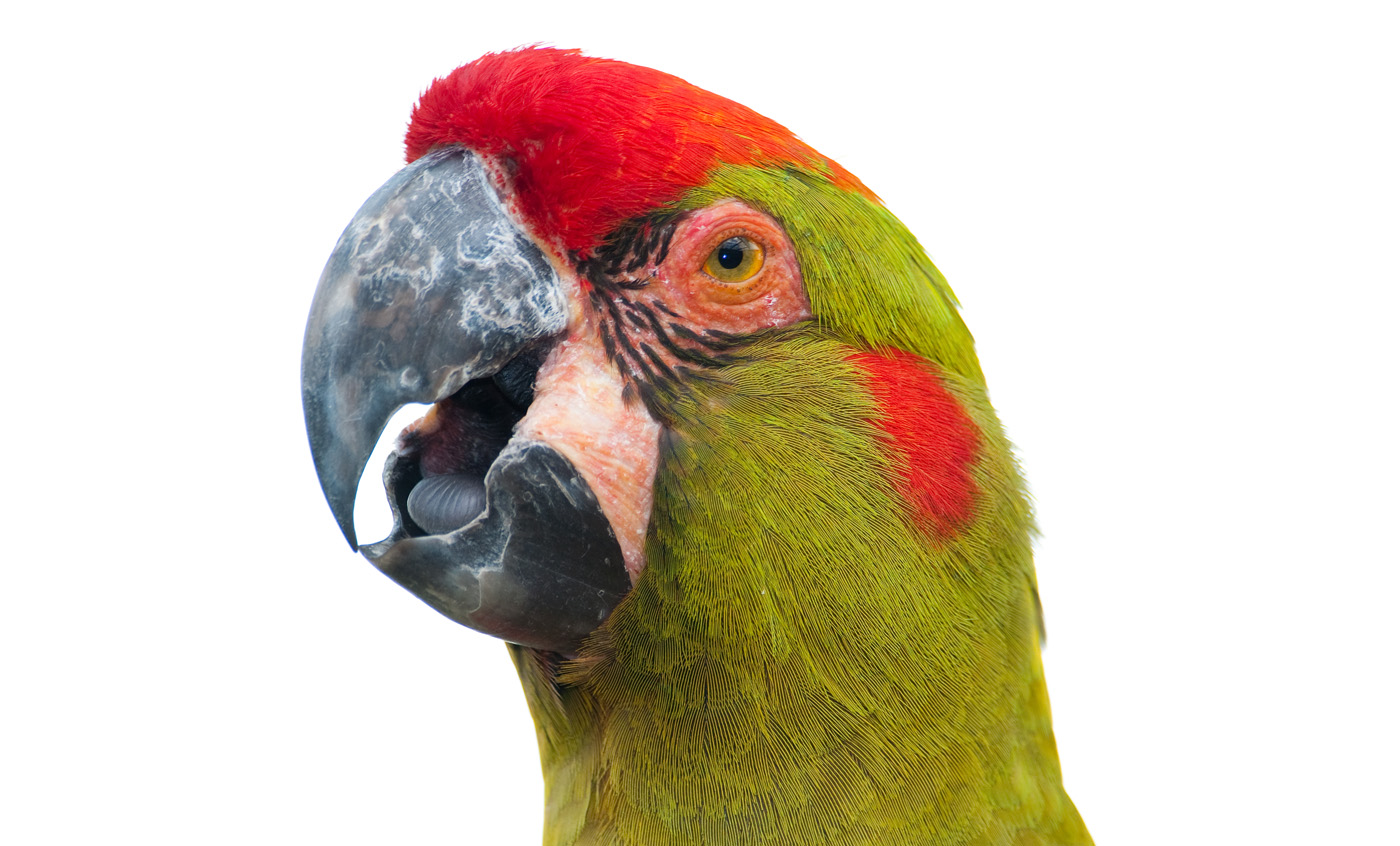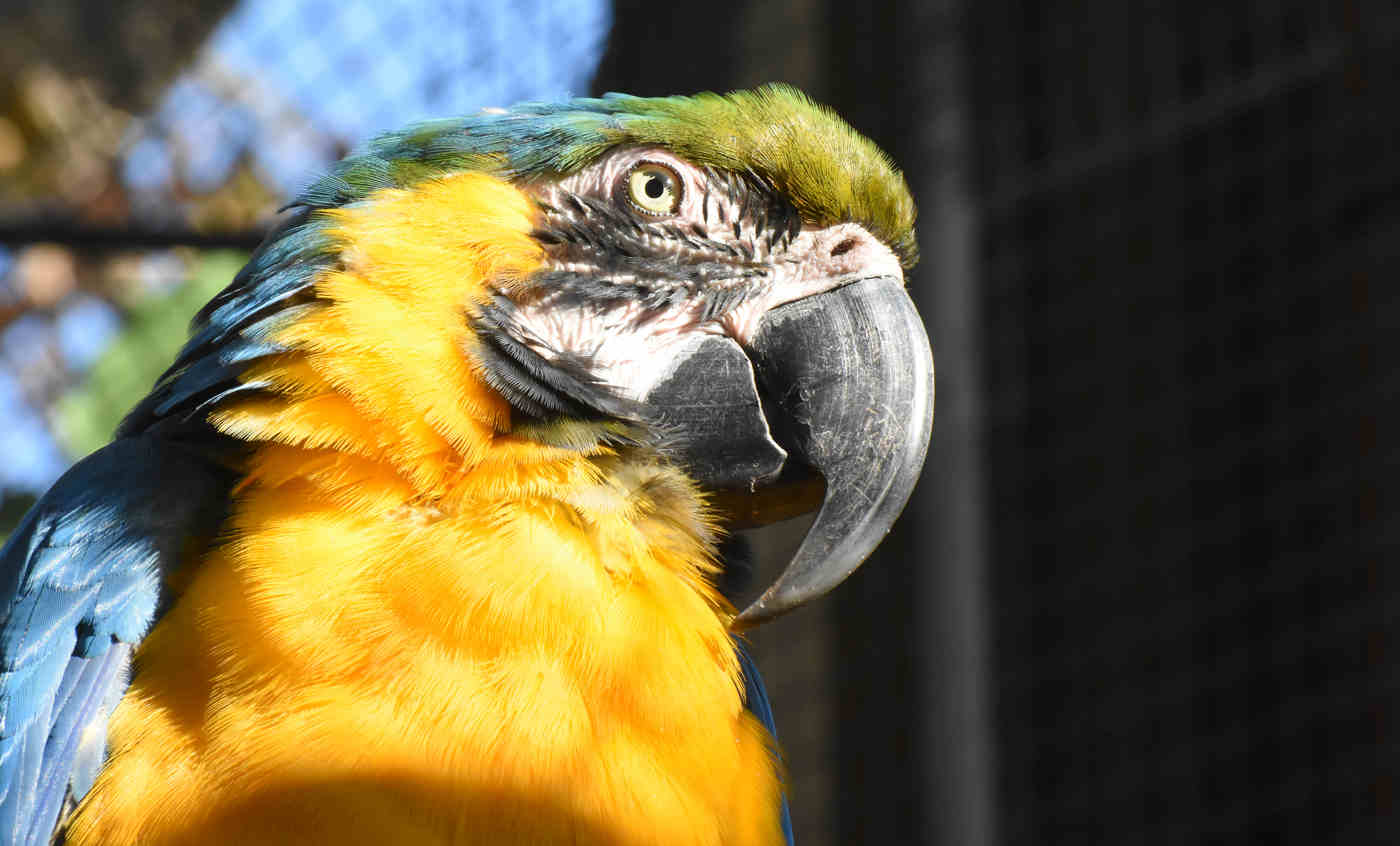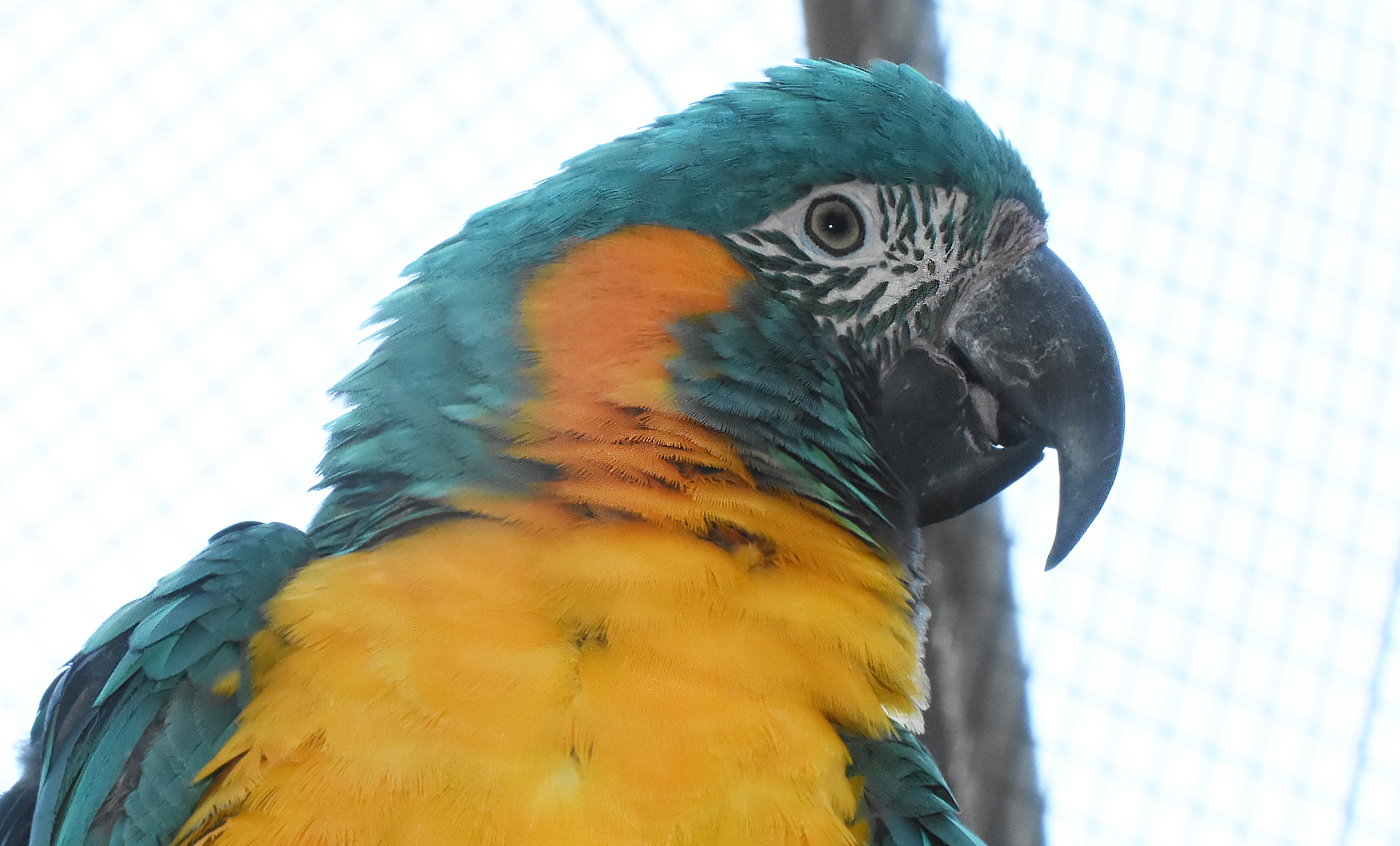Red-fronted macaw
This small macaw, approximately 60 cms long, is only found in the rainforests in the provinces of Cochabamba, Potosí and Santa Cruz in Bolivia, at altitudes of between 1,000 and 3,000 metres. Given this small range and the fact that there are very few specimens in captivity, it is one of the least known of the South American parrots, and is currently in grave danger of extinction.
Natural habit
Bolivia
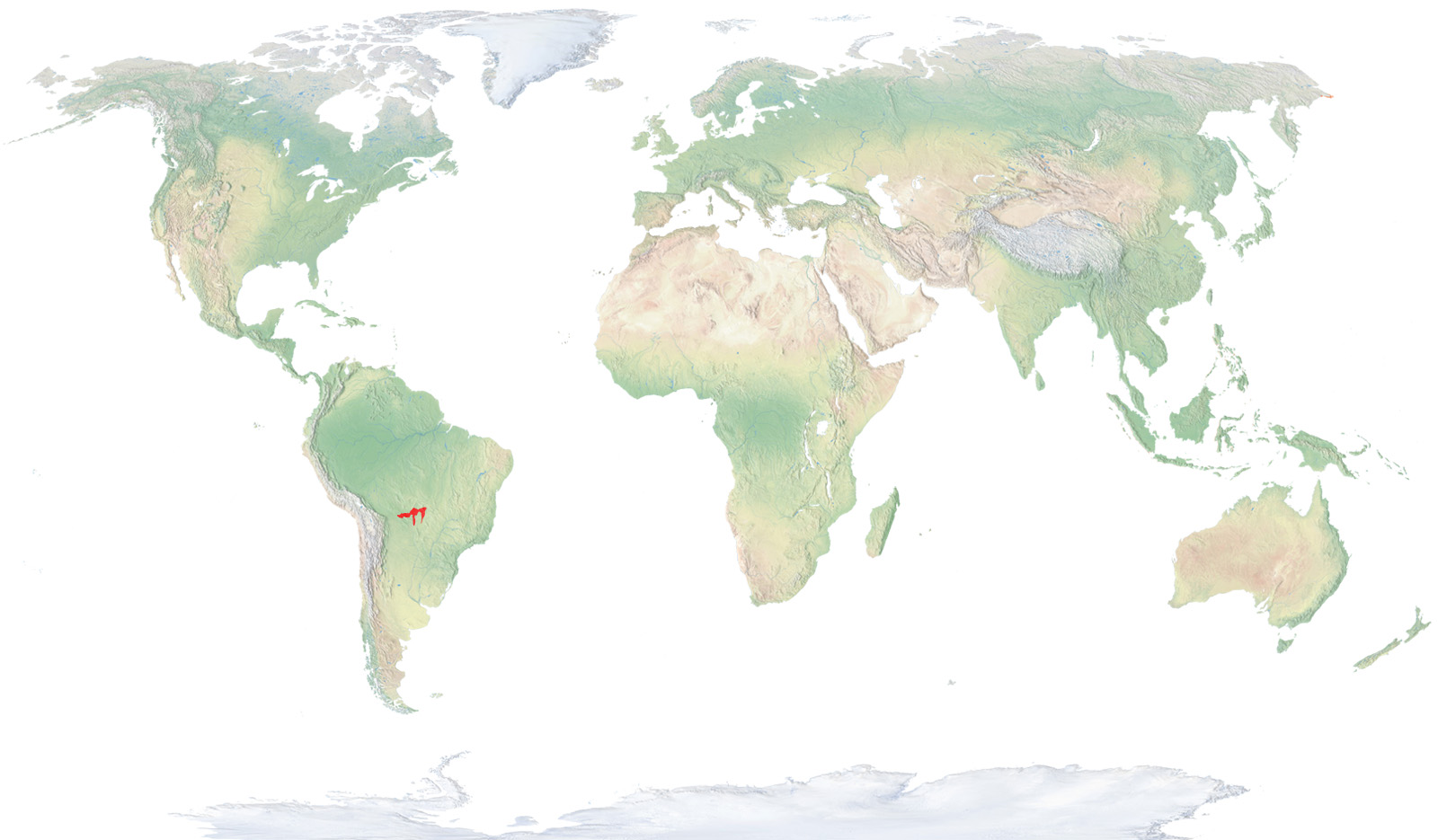
- Distribution / Resident
- Breeding
- Wintering
- Subspecies
Risk level
- Extint
- Extint in the wild
- Critically endangered
- In Danger
- Vulnerable
- Near threatened
- Minor concern
- Insufficient data
- Not evaluated
Taxonomy
Physical characteristics
Biology
Reproduction
Biology
The red-fronted macaw has green plumage on its body, with blue on the tips of the wings and a green tail that is longer than the entire body. The area surrounding the eye is bald, the forehead and back are red, as well as a round spot located behind the eyes and its beak is black.
It only lives in dry forests in a limited region of central Bolivia, in the provinces of Santa Cruz, Cochabamba and Chuquisaca, between 1000 and 2500 metres above sea level.
It feeds on seeds, nuts, fruits, berries and different types of plant matter.
It makes nests in holes in trees and, more rarely, on platforms dug into the steep banks of rivers. It lays one to three eggs that are incubated for some 26 days (data taken from experiences with this species in captivity at different zoos).
They travel in pairs or in small family groups, sometimes made up of over a dozen individuals.
Like all macaws, their populations are in danger of extinction today, due to the destruction of their habitat and excessive capturing for the pet trade. In this case, the situation is worse due to their small area of distribution and the limited original population.
The Barcelona Zoo participates in the EEP for this species.



